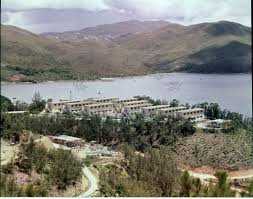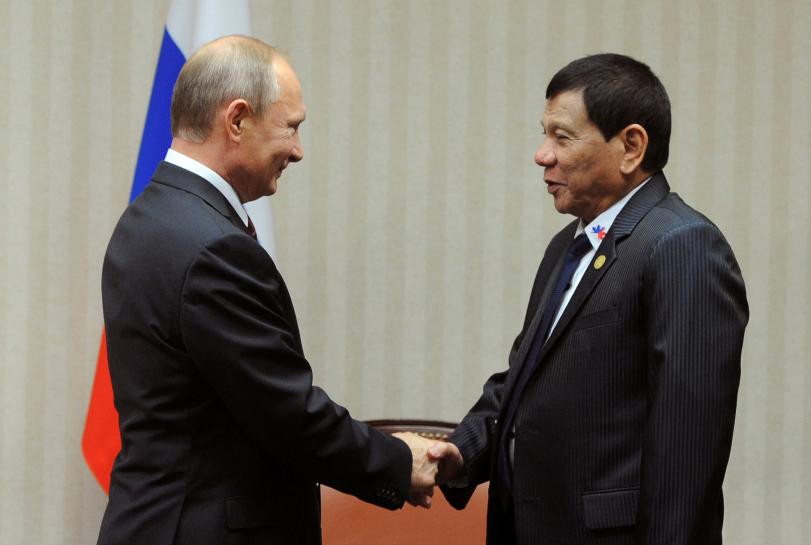Talk given at a group reading of Jose Rizal’s “Noli Me Tangere” at the Peak Galleria, Hong Kong, 20 June 2009, and published in the “Sun” newspaper 1 July 2009

Juan Luna’s El Spoliarium, 1884. Filipino historian Ambeth Ocampo wrote, “…the fact remains that when Luna and Félix Resurrección Hidalgo won the top awards in the Madrid Exposition of 1884, they proved to the world that indios could, despite their supposed barbarian race, paint better than the Spaniards who colonized them.”
How many of us know about a scandal involving one of our national heroes? Few of our history books tell us about it, but what’s known is that a friend of Jose Rizal’s was involved.
As we know, Rizal’s talents flowered while he was in Europe. His sojourns in Madrid, Paris, Heidelberg and London nurtured his genius. Not only did he master several languages, he was also an accomplished writer, a talented artist, a keen botanist and a fine ophthalmologist.
But he was not, like many geniuses, a self-centered man just promoting himself. He gave moral support to his talented compatriots struggling in Europe. How sad then that his efforts at showing that Filipinos were the equals of the Europeans would come crashing down because of one of his friends.
Recently I read a fascinating book about that friend of Rizal’s who, single-handedly, blackened the reputation of Filipinos in 1892. Historian Alfredo Roces’s book titled “Rage” deals with the lives of Juan and Antonio Luna, and of the mestizo nationalist Trinidad Hermenegildo Pardo de Tavera (known as TH).
One reason I was fascinated by the book is because my mother’s elder sister Pacita had been married to a son of the famous TH. Alfredo Pardo de Tavera was the father of my cousin, the late Mita Pardo de Tavera who served as Social Welfare Secretary during Cory Aquino’s time.
I’d always been awed by my Pardo de Tavera cousins as I had heard vague rumors about some dark secrets in their lives. I never really found out what those secrets were — until I read “Rage.”
At the age of 5, I developed a crush on my cousin Mita, especially after seeing her ballet performance in Ravel’s “Bolero” before the War. Not just that, her mother had hired a Chinese amah from Hong Kong who always dressed in black, cooked like a dream, embroidered the children’s clothes and spoke pidgin Spanish.
Little did I dream then that I’d be living in Hong Kong one day and see so many of my kababayan doing what the Taveras’ amah did in those days.
Roces’ book recounts Juan Luna’s art studies in Madrid and his brother Antonio’s military training. The two brothers took up fencing, and Rizal sometimes joined them in tournaments.
In an l890 issue of the Filipino expatriate publication “La Solidaridad,” a critic wrote: “We applaud sincerely the enthusiasm that the Filipino colony of Madrid has developed for this noble art of fencing. Skill with arms gives the individual moral strength and girds him for society’s battles . . . Filipinos have shown a felicitous aptitude for the use of arms.”
Sad to think that the arms which some of our kababayan today prefer are paltiks and imported guns. If only they’d stuck to fencing!
When Juan Luna painted his masterpiece “El Spoliarium” for Madrid’s Bellas Artes national exposition of 1884, his triumph was the pride of Filipinos everywhere. This is comparable today to our being proud to be Filipino when Manny Pacquiao became boxing champ, Leah Salonga won top musical awards, and Miguel Syjuco claimed Hong Kong’s top literary prize for Asia.
During Juan Luna’s triumph in Madrid, personages like Pedro Paterno and TH Pardo de Tavera urged their compatriots to show their patriotism. Spanish critics were lavish with their praise, calling “Spolarium” “magnificent,” “sublime,” “the most discussed painting of the Exposition,” and much more. The painting was purchased for 20,000 pesetas by the Deputacion Provincial de Barcelona. Today it hangs in Manila’s National Museum.
During the award ceremonies in Madrid, Rizal gave an inspiring speech later published in the newspapers. Writer Wenceslao Retana described Rizal: “The young Filipino physician spoke (at the ceremony), and his likeable manner and thoughtful countenance gripped (the audience) from the very first moment.”
They ran excerpts from his speech: “This is the glorification of genius, the exaltation of the fatherland. Though born in Filipinas, (our artists) might have been born in Spain, for genius has no country. . . “
But life in Europe for our expatriate nationalists was not always rosy. Writing in La Solidaridad in 1889, Antonio Luna complained: “My. . . pronounced Malay figure which has attracted extraordinary attention in Barcelona, excited in an outrageous way the curiousity of the children of Madrid. . . . girls and women turn their heads twice . . . to gawk at me and say, in voices loud enough to be heard: ‘Jesus! How hideous! He is Chino! Igorot!’ Everywhere, always that mocking smile combined with the half-haughty, half stupid stare. Often. . . I ask myself whether I live in the capital of a European city.”
Alfredo Roces relates another nasty incident in which Spaniard Celso Mir Deas wrote an article soon after Juan Luna’s artistic triumph. He quoted a racist critic named Francisco Canamaque who had described Filipinos as “immoral savages and mindless apes.”
Mir Deas wrote this in response to a piece he read which he thought Juan Luna had written but which was actually written by Antonio where he had remarked that Filipinos were disillusioned by years of brainwashing by Spain.
Mir Deas quoted Canamaque at length: [quote] “The Filipino’s features (are) always inscrutable. . . his mouth open in a meaningless smile. . . He is lazy from the time he gets up until he goes to sleep. . . . . Is he moral? He’s only concerned with satisfying his appetites.
“Without the remotest idea of honor, ignorant of everything except the blind satisfaction of their appetites. . . . strangers to the laws of honor and honesty, awake only to the brutal sentiments of oriental sensuousness, it is logical that the vast majority of these natives get from the friars and laymen the label of monkeys.
“… (That) despicable maggot, the son of the Ilocos (Juan Luna) . . . makes it a point to reveal that in the heart of the Filipino artist resides a heavy dose of filibusterismo (meaning subversive ideas).
“What would you be had Spain not favored you, (Juan Luna), who would you be if the city of Manila had not supported your studies? (He is). . . . perhaps a savage in fact and spirit”!
Naturally this diatribe not only offended the amor proprio of Filipinos in Spain and elsewhere, it so incensed Antonio Luna that he hunted down the Spaniard and challenged him to a duel. No wonder Filipinos in Europe took up fencing – perhaps in reaction to the racism they faced.
But luckily, the people around the protagonists managed to calm things down and the duel never took place.
Roces’ account of the tragedy of Juan Luna’s marriage to TH Pardo de Tavera’s sister Paz is gripping. Luna didn’t earn much from his paintings, and had no qualms about accepting money from his mother-in-law who had at first opposed her daughter’s marriage to “an impecunious indio artist.” But TH prevailed on her to accept him, and Juan ended up blithely depending on his mother-in-law for financial support during their stay in Paris.
Eventually, after suspecting his wife of infidelity and subjecting her to beatings, Juan one day succumbed to a jealous rage. He shot Paz as she held their little son Andres, then shot his mother-in-law dead as well. He also wounded his other brother-in-law Felix, TH’s younger brother.
In an article called “La Desgracia del Pintor,” TH was appalled at Juan’s lack of delicadeza when he turned up at the funeral and gave a eulogy about his mother-in-law whom he had shot to death.
But the biggest desgracia of all, in my eyes, was the Paris court’s acquittal of Luna, fining him a mere one Franc in damages. Obviously crimes of passion were tolerated in those macho days where there was little justice for females.
TH Pardo de Tavera said later that the publicity of the trial cast Filipinos in the worst possible light before the entire world. Most of Europe buzzed with the sordid details of the violent domestic crime of the Filipino family residing in Paris. Rizal’s efforts to showcase Filipino talent all went down the drain.
The French paper “El Figaro” commented that:
“The blood running through (Luna’s) veins is Malay. The appearance of this little man with his broken nose, his prominent cheekbones, his coppery complexion, his eyes shaped like a Japanese’s . . . produces a strange . . . . impression.”
How does this differ from what we Filipinos face today? From Hong Kong employers denigrating and abusing our domestics, to columnist Chip Tsao and his “nation of servants” jibe, to actor Alec Baldwin’s joke about seeking a Filipina mail-order bride, the racism continues.
But with a genius like Jose Rizal who showed us and the world that talent indeed has no country, we can ignore those unenlightened folks who forget that we’re all part of the human race.


















